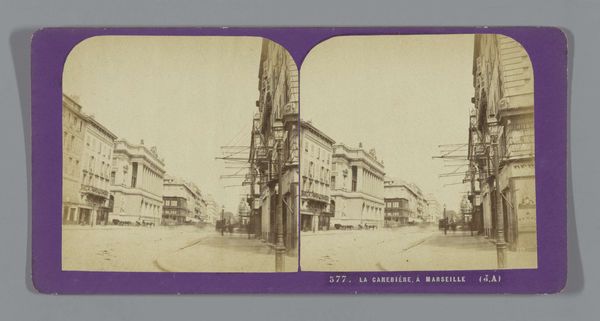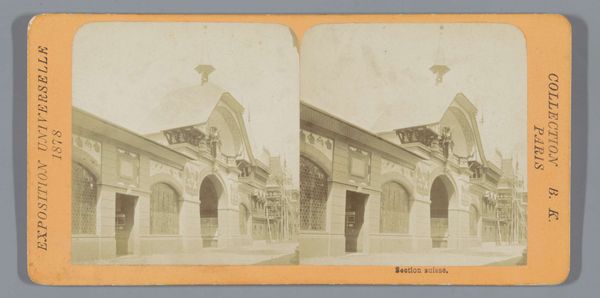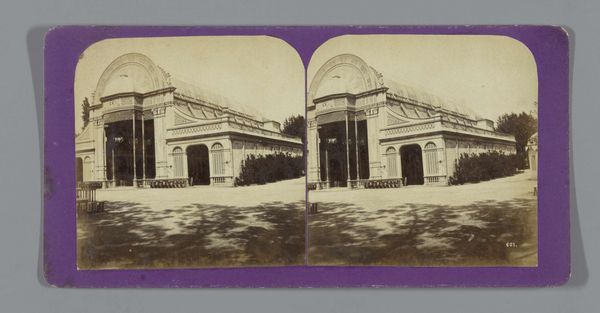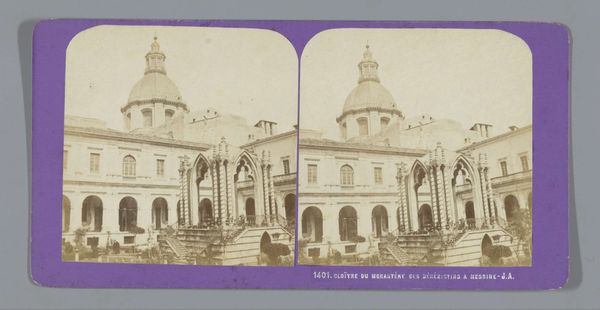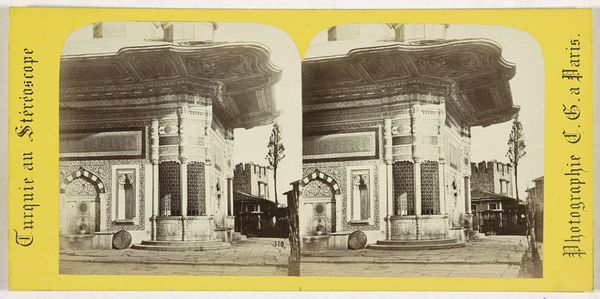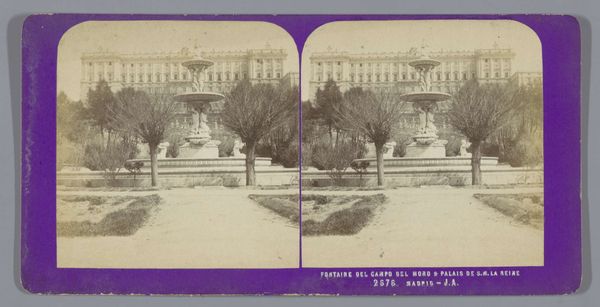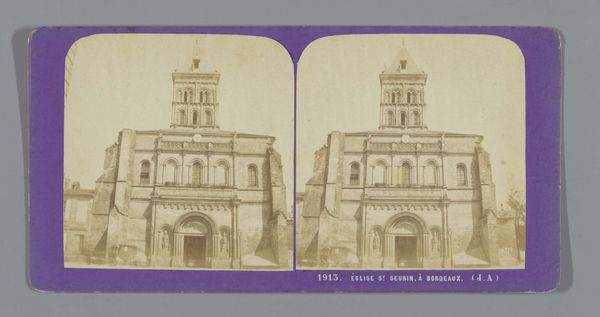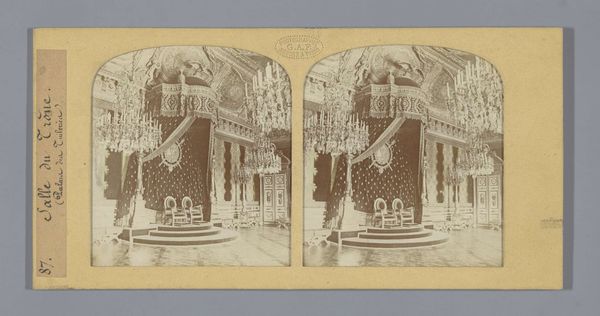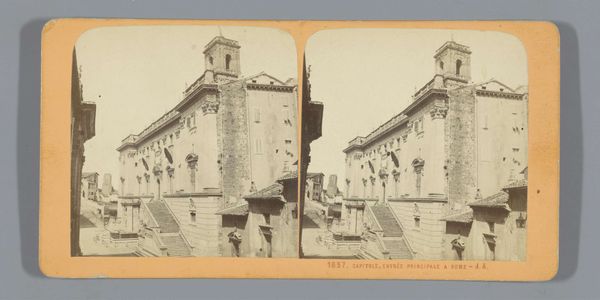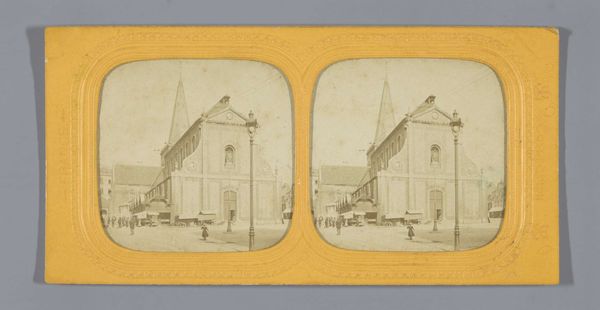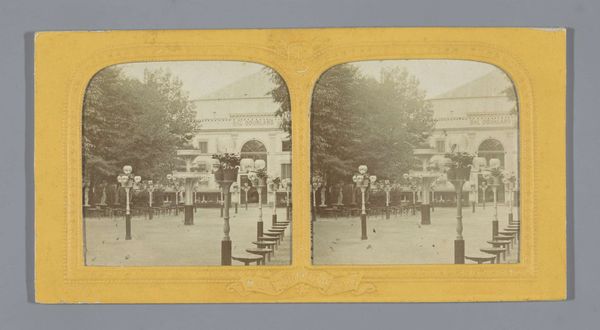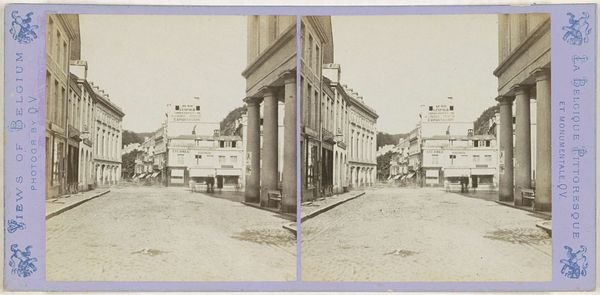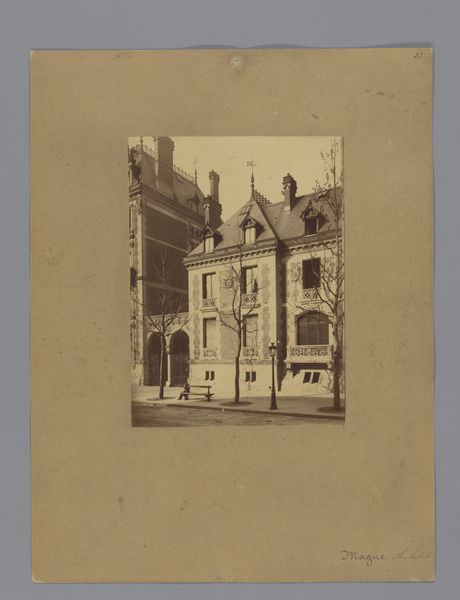
Dimensions: height 85 mm, width 170 mm
Copyright: Rijks Museum: Open Domain
Editor: This is Jean Andrieu’s “Exterieur van de Cathédrale Notre-Dame te Le Havre”, taken sometime between 1862 and 1876. It’s an albumen print. The composition, with its receding lines and tonal variations, creates a somewhat subdued and almost dreamlike rendering of the street. What do you see in this piece, looking at it formally? Curator: Initially, I observe a compelling interplay of light and shadow. The photographer has clearly considered the angle of sunlight in accentuating the architectural forms. Note the repeating geometric patterns - windows, pilasters, the very blocks of the building themselves. These regular, repeating elements provide a rhythm across the photograph's surface. Do you notice any dominant lines or shapes? Editor: Yes, definitely the strong vertical lines of the buildings, and how the street draws your eye into the distance. The geometric shapes become softer and smaller as they move farther away. What effect do you think that has on the overall piece? Curator: Precisely. The diminution of forms as they recede serves to compress space and flatten the composition. The materiality of the albumen print also influences our reading. The sepia tones contribute to a sense of unity and control, unifying diverse shapes within a coherent visual field. It resists dramatic tonal shifts. Editor: So, by focusing on the formal elements, we can appreciate the photograph as more than just a document of a place and time. Curator: Indeed. The composition and tonal qualities elevates it. We witness an intersection of objective record and subjective rendering through these visual devices. Editor: I see what you mean. Focusing on the visual elements gives a new understanding. Thank you. Curator: My pleasure. Considering those fundamental aesthetic elements gives rise to profound ways of appreciating images.
Comments
No comments
Be the first to comment and join the conversation on the ultimate creative platform.

